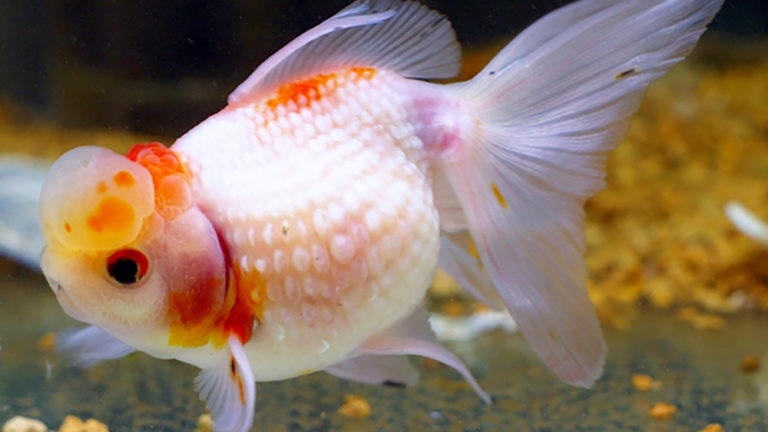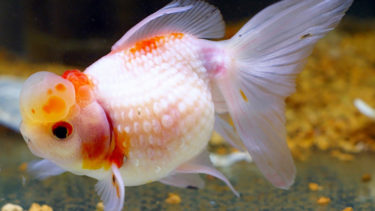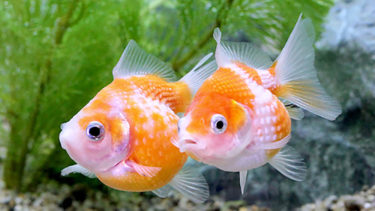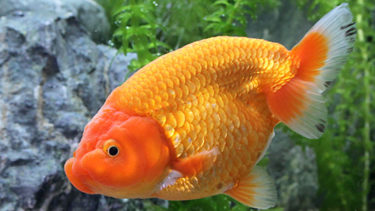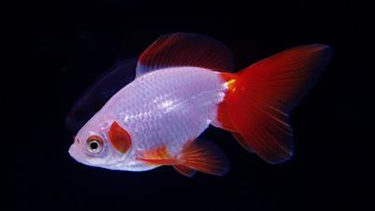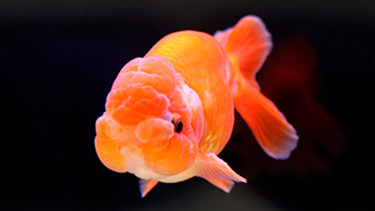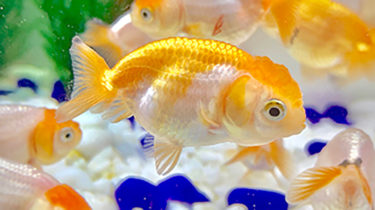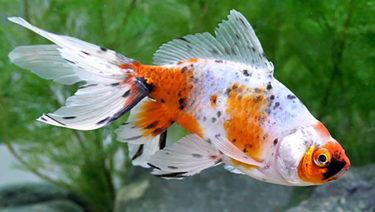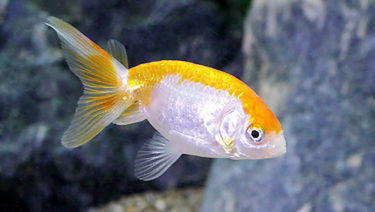The pearl scale with well-developed fleshy mass of the high-headed pearl has the fleshy mass seen in Dutch-type goldfish on its head and the scales on its body have beautiful pearly scales. In this article, I would like to explain in detail the characteristics of the Takagashira Pearl and how to keep it.
What is Takagami Pearl?

High-headed Pearl is a pearl scale with well-developed fleshy scales. The head has the fleshy scales seen in Dutch-type goldfish and the body scales have beautiful pearly scales.High-headed pearls tend to be preferred by experts among pearl scale types because the process of growth is more interesting than that of regular pearl scale due to the presence of a fleshy mass.
The Pearlescent Scale is a goldfish with pearly white scales. In addition to its pearly scales, the Pearlescent Scale is a goldfish with many other cute features that allow it to be enjoyed in a variety of ways. In this article, I would like to explain in detail the characteristics of the Pearlescent Scale and how to keep it. What is pearlescale [...].
Origin of the Takagami Pearl
The Takagami pearls are,It came from China around 1965. In China, it was known as the Chinshulingyo, which is the same as pearlescale, and among them, a type of Chinshulingyo with a well-developed fleshy mass was found, and this type was fixed as the Takatou pearl.After coming to Japan, a variety called Hama Nishiki was created by selecting and fixing individuals that develop a blister-like head mass during breeding. Today, most of the high-headed pearls that can be seen are imported from China and other countries rather than domestically produced.
Many people think that goldfish are the goldfish that you see at fairs and festivals in the summer, and that there are many different kinds of goldfish. And it is no exaggeration to say that each type of goldfish has its own characteristics, and that is the best part about goldfish [...]
How to enjoy Takagami Pearl
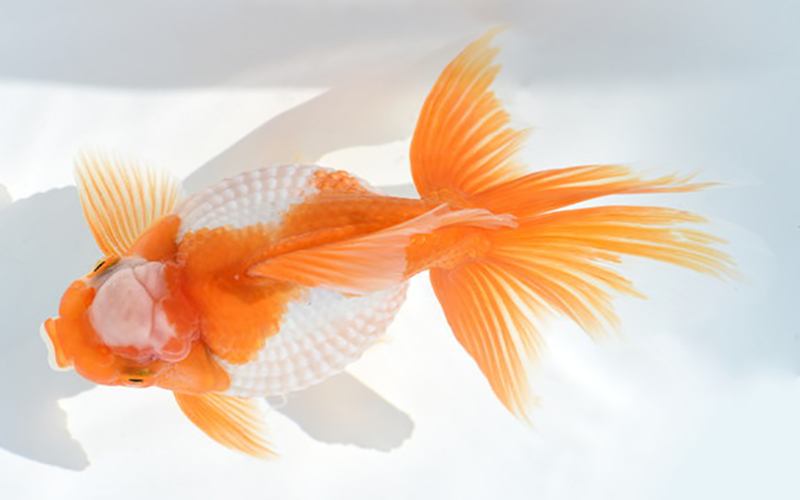
The way to enjoy the Takagashira Pearl is how to appreciate the combination of its head mass and pearly scales, which are different from those of other goldfish. If you want to enjoy this combination to the fullest, it is recommended to view it from the side (side view) in an aquarium rather than from the top (top view) in a bowl or other container.When viewing from the side, it is possible to see the shape of the head and the way the nuchal mass is raised, and also to see the difference between the raised and non-raised parts of the beautiful scales when exposed to lighting. If you want to check the balance of the body and the head, we recommend that you take a closer look at the head.
Points to keep in mind when mixing swimmers
When mixing goldfish with other goldfish and other species, there is sometimes uncertainty as to what species is good and what species is not. First,There is no general prohibition against this or that when mixing goldfish with other species.Therefore, depending on the personality and environment of the goldfish you keep, even species that are said to be bad for each other may get along well with each other. However, there is also the matter of compatibility between goldfish. If you put incompatible goldfish together, there is a high possibility that they will fight or that only one of them will monopolize the food. However, as explained in the beginning, there is no prohibition for goldfish, so if you want to mix them, it may be OK to do so. Now, let us explain which goldfish are compatible with Japanese goldfish and which are not.
Compatible goldfish
Goldfish that are most compatible with the Takagashira Pearl are Ryukin-type goldfish such as Ryukin and Calico Ryukin.Ryukin-type goldfish are characterized by their tail fins, so it is a pleasure to mix various species and compare their tail fins.
About Ryukin
About Calico Ryukin
About Ryukyu Mold
Incompatible goldfish
Goldfish that are incompatible with the Takagashira Pearl are Japanese goldfish, such as Wakin (Japanese goldfish) and Comet (Japanese goldfish).Many Japanese goldfish are agile and grow large in a short period of time. If you mix them with Japanese goldfish, please be aware that the Takagashira Pearl may be eaten by other Japanese goldfish and the difference in body size may cause them to become separated from each other. Also, the scales of the Takagashira Pearl are a characteristic of goldfish, so always watch the goldfish to see if they are chasing and messing with the Takagashira Pearl.
About WAKIN
About Comet
About Us
What to keep in mind when keeping a high-headed pearl
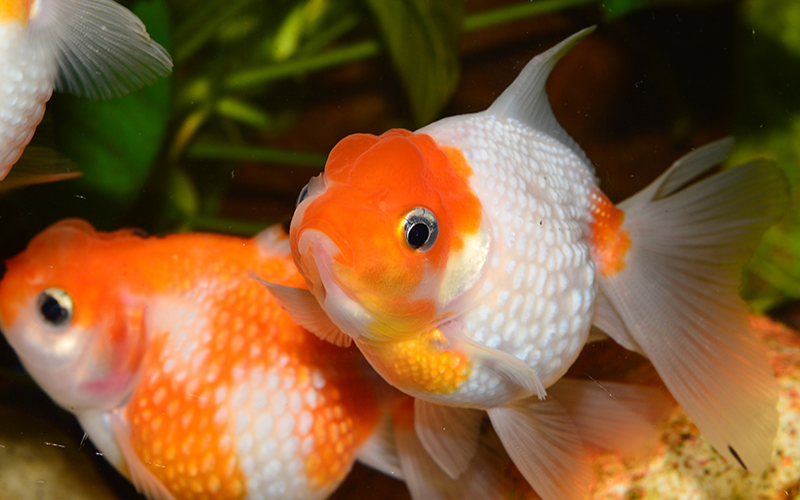
Like pearlescent goldfish such as Pearl Scale, Takagashira Pearl is made of calcareous material that adheres to the top of the scales. Therefore, the process of forming the scales is different from that of ordinary scales, and they are easier to remove than ordinary scales. Therefore, when you keep a high-headed pearl, you need to be careful not to put too much stuff in what you put it in (such as an aquarium). In addition, since the pearl with a high head has a unique feature called a fleshy mass, you need to be careful that the fleshy mass is not pecked by other goldfish as well.And since high-head pearls are also sensitive to changes in water temperature, we recommend that you take extra precautions during periods of extreme water temperature changes.

